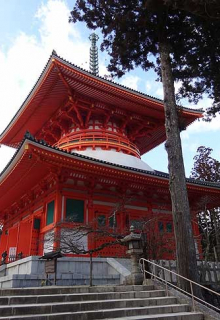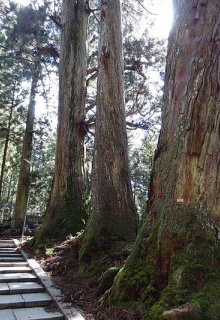Capacity Building Workshop on Nature-Culture Linkages in Heritage Conservation in Asia and the Pacific
Place: University of Tsukuba, Japan
Organized by the World Heritage Studies and the Certificate Programme on Nature Conservation (CPNC) at the University of Tsukuba, in cooperation with UNESCO World Heritage Centre, IUCN, ICCROM and ICOMOS.
The CBWNCL
Heritage Conservation is an evolving practice, and one of the current debates focuses on identifying and recovering the connections between the nature and culture sectors. This exchange has become instrumental for the interpretation, conservation and sustainable management of both natural and cultural heritage sites.
The purpose of the Capacity Building Workshops on Nature-Culture Linkages in Asia and the Pacific (CBWNCL) is to contribute to the World Heritage Capacity Building Programme led by ICCROM and IUCN, in consultation with ICOMOS and the UNESCO World Heritage Centre, in developing new approaches towards integrated conservation of cultural and natural heritage. These workshops began in 2016 and explore nature-culture linkages with a focus on theory and practice in Asia and the Pacific Region. The visit to Japanese heritage sites forms a core component of the programme, where participants conduct practical work. Participants will be able to understand issues and explore approaches being adopted in the field.
The first workshop of this kind held in 2016 highlighted the theme, “Agricultural Landscapes”. It was inaugurated with an international symposium at the University of Tsukuba and featured field visits to the Noto Peninsula and the World Heritage site of the Historical villages of Shirakawa-go and Gokayama. Participants came from the culture and nature sectors and represented eleven countries in Asia and the Pacific (Philippines, India, Australia, Bangladesh, Sri Lanka, Taiwan, China, Turkey, Indonesia) and beyond (Colombia and Ghana).
Theme of CBWNCL 2017: Sacred Landscapes
The concept of sacredness implies certain regulations that could be associated with the modern practice of conservation. Restrictions and prohibitions on human behaviour are established by a certain community regarding their valuable objects, sites and even individuals. Special significance is given to the sacred, thus contributing to the sustainability of cultural and natural heritage.
The IUCN Guidelines for the Conservation and Management of Sacred Natural Sites defines the term “Sacred site” as an area of special spiritual significance to peoples and communities; and the term “Sacred natural site” as an area of land or water having special spiritual significance to peoples and communities. In this workshop, we intend to focus on “Sacred landscapes”, understood as those areas where nature-culture linkages are represented by the spiritual values that communities assign to their holy environments. Sometimes, sacred landscapes are of high biodiversity value for their pristine forests or rare species, or because of their unique geological features. In essence, these can be considered landscapes with both cultural and natural values and any conservation effort has to consider all of them. There are many such sites on the World Heritage List, and many are located in the Asia and the Pacific region.
Several challenges arise in the conservation of this type of heritage. Sites of this sort represent a rich diversity, but they can also be subject to conflict between different groups holding different beliefs and a similar stake. Moreover, pilgrimage and tourism converge in sacred landscapes, impacting them environmentally, economically and culturally. There are many efforts being made to address these challenges within both natural and cultural heritage sectors at national and international levels. For instance, in the case of Japan, the Law for the Protection of Cultural Properties protects places of scenic beauty and natural sacred landscapes as cultural assets, giving an example of interlinkages of nature and culture in the protection of heritage.
Participants of the CBWNCL 2017 will explore the nature-culture linkages in sacred landscapes and the possibilities of developing comprehensive approaches that consider the cultural values of natural areas and the cultural practices of sacredness as tools for the conservation of cultural and natural heritage. Using current knowledge that has been developed, sharing the Japanese experience and exchanging knowledge among practitioners from the Asia and the Pacific region where many natural and cultural landscapes are considered sacred, and recommendations for the conservation of sacred landscapes in this region would be suggested.
Objectives
- To strengthen the theoretical knowledge on sacred landscapes and their relevance in connecting conservation practices between natural and cultural heritage professionals.
- To visit and exchange experiences with local managers and residents in areas/sites where sacred landscapes are protected and conserved with different approaches, initiatives and governance systems.
- To reflect on nature-culture linkages, natural values and cultural values in sacred landscapes in general, and in participants’ own sites/case studies in particular.
- To establish networks among heritage practitioners in the region.
- To elaborate recommendations for the conservation of sacred landscapes in Asia and the Pacific following a nature-culture approach.
Visit the website of the University of Tsukuba for more details.
Methodology
The workshop is an intensive programme that combines theory and practice through lectures, presentations and roundtables in Tsukuba at the University Campus, and a field trip to the World Heritage property “Sacred sites and pilgrimage routes of the Kii Mountain Range”, where participants will get in contact with local managers and local communities.
Participants
The workshop is open to a maximum number of 15 young professionals from Asia and the Pacific region involved in the management of cultural or natural heritage sites, specifically, sacred landscapes. Mid-career Heritage Practitioners with minimum of 5 years of experience from both natural and cultural heritage sectors currently engaged in managing/working with sacred landscapes in particular, and natural heritage sites with cultural values and vice versa are eligible to apply.
Lecturers
International and Japanese professionals and academics in the field of heritage conservation (nature and culture sectors).
Working language: English
Course Fee: Free
Travel, accommodation and living expenses
Organizers will cover the cost of accommodation and living expenses for the selected participants and a limited number of scholarships will be available to cover the travel costs.
Certificate
A certificate of attendance given by the University will be awarded to participants who satisfactorily complete the workshop.
Application Requirements
Guidelines for Applications (pdf)
Application Form
To apply
Applications should be e-mailed to applicationscbwncl@gmail.com
Please see the Guidelines for Application for more details.
Application deadline: 7 May 2017


